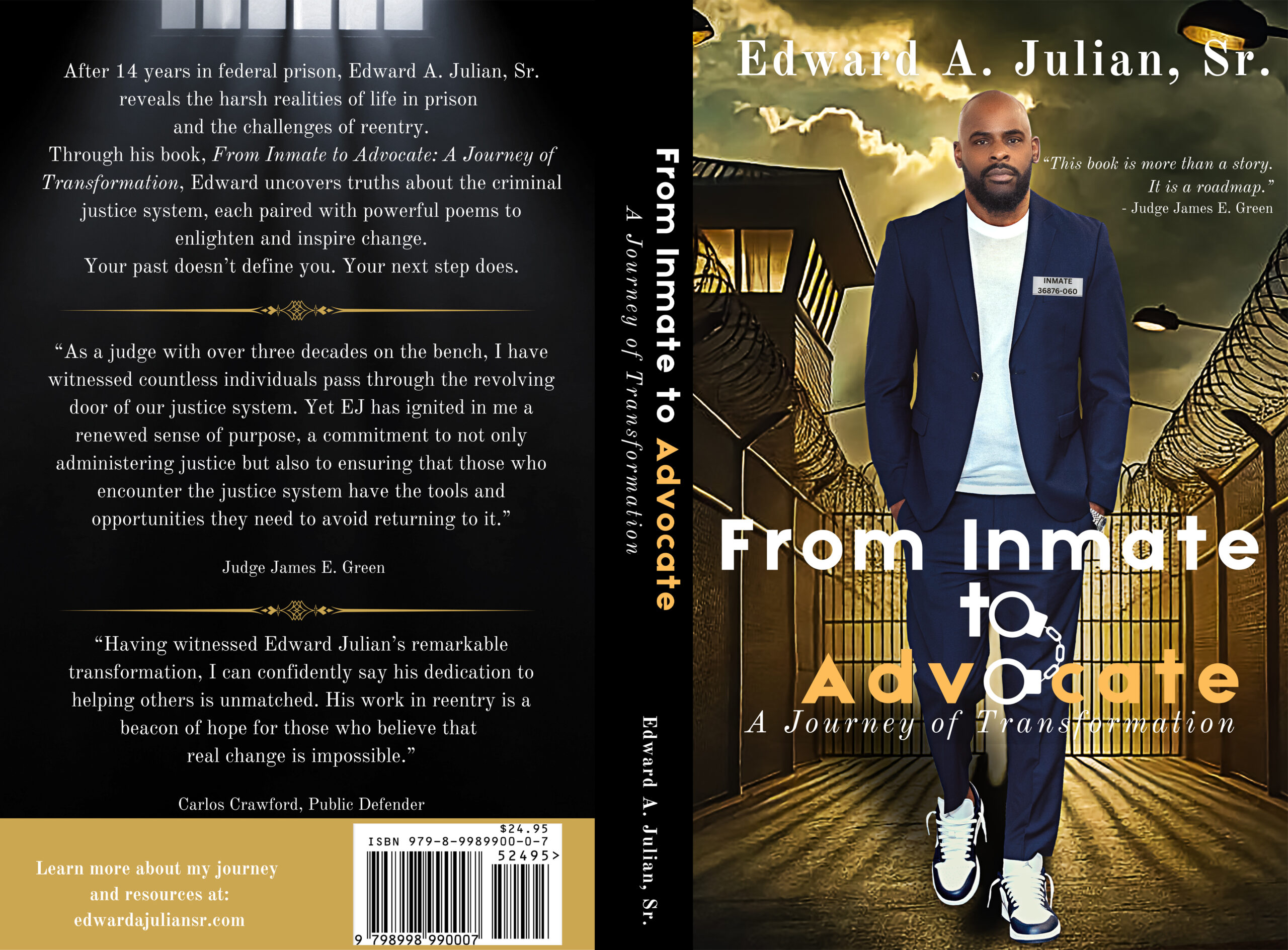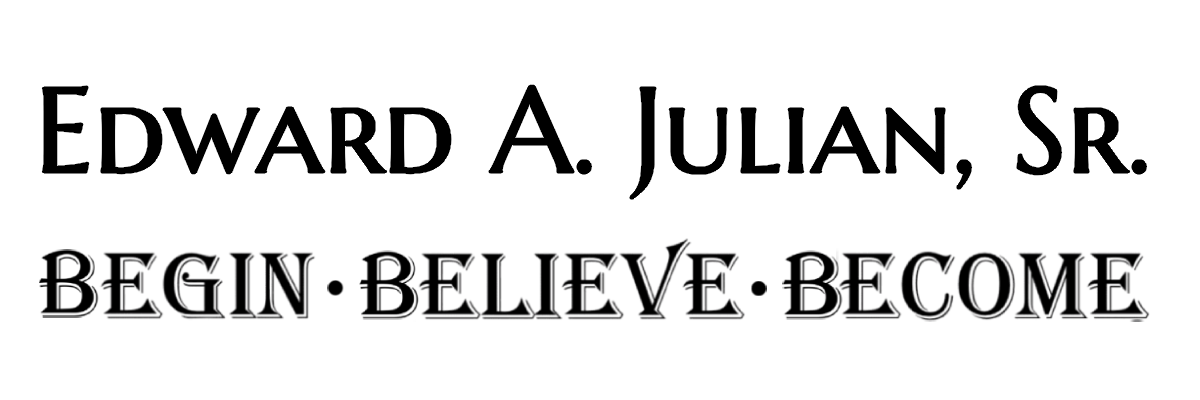books
From Inmate to Advocate:
A Journey of Transformation

“Your past doesn’t define you. Your next step does.”
-Edward A. Julian, Sr.
The Journey Behind the Book
The Journey to Writing This Book
This book wasn’t just written, it was fought for.
It wasn’t drafted in a comfortable office, at a polished desk, or on a brand-new laptop. It was written in a prison cell, with nothing but a pen, paper, and raw determination. No typewriter. No computer. No editor. Just me, the words, and the fight to get them down before the moment passed.
I wrote until my fingers swelled, blistered, and bled. When the pain became too much to hold the pencil, I clenched it tighter. I refused to stop. Instead, I wrapped my finger in toilet paper, secured it with tape, and kept writing, anything to create a cushion, anything to keep going. Because the vision for this book never left me.
Then, for 13 years, I did nothing with it.
Not because I didn’t care, but because life moved fast. I came home and went straight to work, trying to rebuild what incarceration had taken. I worked in reentry, helping others find their way back. I spent eleven and a half years at an eyeglass and contact lens company, pushing forward, proving myself. I stayed busy, grinding, surviving, moving forward.
But the book, the story, was always there, waiting.
Six months ago, I picked it back up.
And the moment I did, the weight of it hit me.
Writing this book wasn’t just about putting words on paper, it was about reliving everything I had survived. Every sentence forced me back into the pain, the trauma, the isolation of incarceration. I thought I was ready, but the truth was, it broke me all over again. It was so heavy on me that I had to start seeing my therapist again. The memories I had buried, the ones I thought I had moved past, came rushing back.
This book took everything out of me.
But I refused to stop.
Finishing wasn’t just about completing a project—it was about reclaiming my story on my own terms. It meant finding the right people, the ones who could help bring this vision to life.
And I paid for that search.
I went through multiple editors who couldn’t get it right. I worked with a book cover designer who created four different versions, but none of them captured what my wife was looking for. Each attempt fell short of the depth, the emotion, and the power this story held.
Then, I took a chance on someone who had never designed a book cover before—my photographer. And finally, the vision came to life.
But that wasn’t the only time I spent my hard-earned money trying to get it right.
I put in long hours, worked multiple jobs, and took the money I had earned—money
I sacrificed money, time, energy, and sleep for—only to hand it over to people who didn’t deliver. Some took the payment and disappeared. Some made promises they never kept. Some started the work but never finished. And some did the job, but not well enough.
Each time, I thought, “Maybe this one will be different. Maybe this time, I’ll get what I paid for.”
But over and over, I found myself paying for disappointment.
And that was the hardest part, because I wasn’t just investing in a book—I was investing in a dream. A dream that people cashed in on without a second thought, as if my sacrifice didn’t matter.
But I refused to let them take more from me than they already had.
I refused to let lost money stop me from finishing what I started.
Through all of it, there were two people who stood beside me in different, yet equally powerful, ways.
My wife is my foundation.
From the very beginning, just three months after my release, she was there. Not just physically, but in every way that mattered. She supported me financially when I was trying to find my footing. She lifted me spiritually when the weight of the past threatened to pull me under. She was my strength emotionally, standing firm when I felt like everything around me was uncertain. Through every challenge, every setback, and every victory, she never wavered.
And then there was someone else, someone I’ve never even met in person, who helped me navigate so many critical moments along the way.
In 2015, a co-worker introduced me to someone close to him, and from our very first phone call, she became a force in my life. She helped me through obstacles I didn’t always know how to face—navigating workplace discrimination, making sense of opportunities, and pushing forward when doors seemed to close. And when I was ready to return to this book, she was right there again, helping with formatting, rewriting, finding the right web designer, and handling the countless emails and calls that brought my vision to life.
For nearly a decade, she has been a steady guide, offering clarity and direction when I felt lost.
Between them, one who stood beside me in every battle and one who helped me fight through the chaos, even from a distance, I was never alone in this journey.
Some nights, I lay awake, my mind racing with ways to make this book stronger, sharper, more powerful. No matter how exhausted I was, sleep wouldn’t come. The weight of the words, the memories, and the responsibility to get it right kept me restless.
So I did the only thing I knew how to do, I picked up my phone, opened my notes, and started writing.
Now, after years of setbacks, revisions, and relentless effort, I’m ready.
Ready to share this book. Ready to tell my story. Ready to prove that no struggle is too great to overcome.
This isn’t just a book.
It’s a testament to grit and determination.
It’s a battle cry for those who refuse to be defined by their past.
It’s my fight. My determination. My truth, poured onto every page.
If you’ve ever felt trapped by your past, if you’ve ever questioned whether change is possible—this book is for you.
I didn’t just write this book. I survived it.
Now, I’m putting it in your hands.
Excerpt from the Book:
The guard’s hands moved over me, checking every pocket and seam, before waving me through the metal detector. “Take off your boots,” he ordered, nodding at the steel-toed footwear we were required to wear in the UNICOR factory. I slipped them off and watched as he banged them against the ground, checking for anything hidden inside. The sound echoed sharply in the small hallway, a reminder of the humility forced upon me, the pain of confinement, the anger of being stripped of dignity, and the frustration of knowing how far I’d fallen from the life I once knew. Once I cleared the metal detector, I slipped the boots back on and stepped into the factory with a few other guys starting that day. We were the new labor, handed over to a system that didn’t care about our past or our future. An inmate walked over to us, his movements casual but quick. He nodded and said, “What’s up?” His tone was relaxed, but his eyes darted around the room. The conversation started with the usual questions: “Where are you from? What unit are you in? How much time did you get?” It was small talk, nothing deep. Just as one of the guys was answering, a commotion broke out about ten feet away. Two inmates were arguing, their voices low but intense. Before anyone could intervene, one of them threw a hot cup of coffee he was holding in the other man’s face, jumped on the long wooden table that was used to place the items worked on in the warehouse, and kicked the guy in the face as he sat in the chair at his workstation.

